|
When I was first introduced to the Congregation of Holy Cross as a student at Saint Mary’s College at Notre Dame, I was confused why their patron is Our Lady of Sorrows. I see myself as a cheerleader for my loved ones and try to bring joy to everything I do in life. Studying psychology and theology taught me more about the depths of joy and the paradox of holding joy and sorrow simultaneously. Joy and sorrow are not analogous to happiness and sadness. So, I can still bring joy even when accompanying others in sorrow. In the first letter from St. Paul to the Corinthians, we learn that faith, hope, and love are the three things that will last forever. We cannot have one without the other two. We have hope because we have faith and love. As a Christ-centered marriage and family therapist, I have a couple of images of the sorrowful mother in my office so my clients are reminded that they are not alone in their suffering. The Church provides a way to reflect on the Seven Sorrows of Our Lady. In each of these arrows that pierce her heart, she is either holding, searching for, or gazing at Jesus. The Seven Sorrows of Mary:
At the Wedding at Cana, Jesus told his beloved mother that if he began his public works, their humble life together as a family would never be the same. He would no longer be just her son but recognized as the Savior of all. She would no longer be just his mother but the mother of all. She consented to this road of suffering because she trusted God and meant her words at the Annunciation, “may it be done to me according to your word.” (Luke 1:38) Imagine Mary at the foot of the Cross. She was full of sorrow watching her son take his last breaths. What kind of mother would she be if she was not sad watching her son suffer? In her tears, she believed (“Blessed are you who believed that what was spoken to you by the Lord would be fulfilled.” Luke 1:45) in the God she knew so intimately and loved with a heart that was not tarnished by sin. So, if it is okay for her to be full of sorrow, it is okay for each of us, too. We must be cognizant that our sorrow does not turn us away from the Cross in despair, but rather leads us toward the Cross in hope. We do not venerate the Cross because it is a torture device, but rather an instrument of salvation. Good Friday is not the end of the story, and Easter Sunday cannot exist without Good Friday. St. Paul wrote to the Romans that “all things work for good for those who love God.” (Romans 8:28) God does not waste anything and does not leave us alone in our sorrow. As Catholics, we believe in redemptive suffering; we can offer our suffering for the redemption of the souls of others. Mary is the first and greatest disciple and her intercession is incredibly efficacious. In my life and the lives of the clients I journey with, I have witnessed that the greatest transformation comes from seasons of sorrow. It is in those most challenging moments that Jesus and Our Sorrowful Mother embrace us with such tenderness and empathy. “For we do not have a high priest who is unable to sympathize with our weaknesses, but one who has similarly been tested in every way, yet without sin. So let us confidently approach the throne of grace to receive mercy and to find grace for timely help.” (Hebrews 4:15-16) Mother Teresa so beautifully says that, “Pain and suffering have come into your life, but remember pain, sorrow, suffering are but the kiss of Jesus - a sign that you have come so close to Him that He can kiss you.” As you carry your crosses this week, may you see it just as a piece of the puzzle that God is building in your story. Jesus is not defined by the Cross; He overcame it. You are not defined by your crosses, either. St. John Paul the Great says, “we are an Easter people and Alleluia is our song.” In tragic circumstances, look for the heroes. In times of darkness, look for the light. I think of a hymn written by Steve Warner that is often sung on the campuses of Notre Dame and Saint Mary’s College. The refrain is: “Cross of our hope, and tree of our salvation, Sown in our land, and spread near and far, Life-giving fruit, our portion and our promise, Ave Crux! Spes Unica!” https://www.youtube.com/watch?v=Lk8fpSzM8LA **This image is from: https://artuk.org/discover/artworks/study-of-the-pieta-127796**
0 Comments
The past two months we have gotten to celebrate the feast days of many incredibly saints who can be role models for us throughout all the ups and downs of life. This September is no different. As we transition out of summer and enter into new routines in the midst of the continuing pandemic, we can turn to many of the saints this month who are known for their healing and ability to help others grow in their faith. Saints Known for Physical Healing Earlier this month on September 1st, we celebrated the feast of St. Giles. I had never heard of St. Giles until I read a blog post, from the early days of the coronavirus pandemic, about the 14 Holy Helpers. But the more I got to learn about St. Giles, the more his life inspired my own personal faith journey. Even though an injury crippled one of his legs, St. Giles was known for his miracle-working abilities for those who came to him. His mission as a miracle-worker was always centered on others, not himself. A similar selflessness was seen by two martyrs in the early Church, Sts. Cosmas and Damian, whose feast we will celebrate on September 26th. They both were doctors and did not accept payment for any of their services, recognizing the humanity in each person. They utilized their God-given skills to help anyone in need, which led them to become recognized as the patron saints of physicians. All three of these saints remind me that while this world is not our final destination, taking care of our earthly bodies remains very important. In whatever way we may need physical healing, God is eager to hear us and to help us physically as we continue to live out His mission here on Earth. Saints Known for Spiritual Healing Next week, we will celebrate the feast of Our Lady of Sorrows. The Marian feast of Our Lady of Sorrows is special because it is about the spiritual turmoil Mary experienced during her life. This is why Our Lady of Sorrows is typically represented by seven daggers piercing her heart. For me, Our Lady of Sorrows is not just about praying for the intercession of Mary, but also placing our complete trust in the Lord, just like she did throughout the sorrows in her life. This trust was also central to St. Padre Pio’s ministry. He recognized the need for spiritual healing and committed to hearing Confessions, and he understood the significant act of faith it took to go to Confession. Through the intercession of Our Lady of Sorrows and St. Padre Pio, may we take time this month to trust God with spiritual healing in our lives. Role Model Saints for Spiritual Growth This month is bookended by two saints who are role models for integrating spiritual growth into the activities of their daily life: St. Teresa of Calcutta, whose feast was celebrated on September 5th, and St. Vincent de Paul, whose feast will be celebrated on September 27th. The interesting thing about these saints is that they both could have fallen into the categories of physical healing or spiritual healing. But for me, these well-known saints have been role models for integrating caring for other people with spiritual growth. It seems easy to get so focused on our work that we forget the deeper meaning behind it. Mother Teresa and St. Vincent de Paul worked to help those in need, and they saw Christ in everyone and in every task they did. While we may not be feeding the poor of Calcutta every day, we too can try to grow spiritually by seeing Christ in every aspect of our day. As we continue throughout this month of September, let us ask for the saints’ intercession for healing and learn from their lives in order to grow closer to Christ. To learn more about the saints, visit our Catholic Feast Days Website by clicking here. To view a calendar of the feast days in September, and each month, click here. **This blog was originally published on September 9, 2021**
The past two months we have gotten to celebrate the feast days of many incredibly saints who can be role models for us throughout all the ups and downs of life. This September is no different. As we transition out of summer and enter into new routines in the midst of the continuing pandemic, we can turn to many of the saints this month who are known for their healing and ability to help others grow in their faith. Saints Known for Physical Healing Earlier this month on September 1st, we celebrated the feast of St. Giles. I had never heard of St. Giles until I read a blog post, from the early days of the coronavirus pandemic, about the 14 Holy Helpers. But the more I got to learn about St. Giles, the more his life inspired my own personal faith journey. Even though an injury crippled one of his legs, St. Giles was known for his miracle-working abilities for those who came to him. His mission as a miracle-worker was always centered on others, not himself. A similar selflessness was seen by two martyrs in the early Church, Sts. Cosmas and Damian, whose feast we will celebrate on September 26th. They both were doctors and did not accept payment for any of their services, recognizing the humanity in each person. They utilized their God-given skills to help anyone in need, which led them to become recognized as the patron saints of physicians. All three of these saints remind me that while this world is not our final destination, taking care of our earthly bodies remains very important. In whatever way we may need physical healing, God is eager to hear us and to help us physically as we continue to live out His mission here on Earth. Saints Known for Spiritual Healing Next week, we will celebrate the feast of Our Lady of Sorrows. The Marian feast of Our Lady of Sorrows is special because it is about the spiritual turmoil Mary experienced during her life. This is why Our Lady of Sorrows is typically represented by seven daggers piercing her heart. For me, Our Lady of Sorrows is not just about praying for the intercession of Mary, but also placing our complete trust in the Lord, just like she did throughout the sorrows in her life. This trust was also central to St. Padre Pio’s ministry. He recognized the need for spiritual healing and committed to hearing Confessions, and he understood the significant act of faith it took to go to Confession. Through the intercession of Our Lady of Sorrows and St. Padre Pio, may we take time this month to trust God with spiritual healing in our lives. Role Model Saints for Spiritual Growth This month is bookended by two saints who are role models for integrating spiritual growth into the activities of their daily life: St. Teresa of Calcutta, whose feast was celebrated on September 5th, and St. Vincent de Paul, whose feast will be celebrated on September 27th. The interesting thing about these saints is that they both could have fallen into the categories of physical healing or spiritual healing. But for me, these well-known saints have been role models for integrating caring for other people with spiritual growth. It seems easy to get so focused on our work that we forget the deeper meaning behind it. Mother Teresa and St. Vincent de Paul worked to help those in need, and they saw Christ in everyone and in every task they did. While we may not be feeding the poor of Calcutta every day, we too can try to grow spiritually by seeing Christ in every aspect of our day. As we continue throughout this month of September, let us ask for the saints’ intercession for healing and learn from their lives in order to grow closer to Christ. To learn more about the saints, visit our Catholic Feast Days Website by clicking here. To view a calendar of the feast days in September, and each month, click here.
“And a sword will pierce through your own soul also.” -- Luke 2:35 I have a tradition of watching Mel Gibson’s The Passion of the Christ every year, usually on Good Friday. However, this year I decided to watch it on Ash Wednesday to prepare me for Lent. Every time I watch it, something new stands out to me. This year, I noticed with particular clarity how Mary follows Jesus throughout every step of His Passion and, more specifically, the effect it has on Our Lord. Whether it be His arrest, scourging, or His walk towards Calvary, every time He locked eyes with Mary, His energy was replenished and His courage renewed. Granted, this is from a film, but it isn’t that difficult to imagine. The love that Christ had for His mother is beyond anything we can conceptualize. I’ve always found this—and her—to be somewhat mysterious and always a little bit beyond my reach of understanding. But I think reflecting on her title of “Our Lady of Sorrows” can encourage us to suffer well, especially during this Lenten season. Mary, perfectly united with the will of her Son, was always completely open to His grace and His love. Along with this perfect unity, however, came the most intense and acute suffering ever suffered after Christ Himself. It is said by many saints, including St. Ephrem, St. Ambrose, St. Bridget of Sweden, and St. Alphonsus Liguori, that Mary suffered an interior, emotional crucifixion during the Passion of her son. Additionally, due to her sinless nature, the intensity of her suffering during Christ’s Passion was beyond anything we can imagine. St. Bernardine of Siena once said, “the grief of Mary was so great that, were it divided amongst all men, it would suffice to cause their immediate death.” This suffering of Our Lady of Sorrows, so beautifully depicted in the film, is ironically comforting. Mary is the ultimate example of not only how to suffer, but also how it can glorify God if fully embraced. She shows us that even through our suffering we can fulfill the will of God. One can argue that much of her life—beginning with the prophecy of Simeon and continuing through the laying of Christ in the tomb—was lived in some degree of suffering, especially knowing what would befall her Son. But because she was completely devoted to the fulfillment of the will of God, her suffering was redeemed in and through the glory of the resurrection of Christ. The film depiction of Christ looking to His mother is also something we can learn from this Lent. Mary can be a source of strength and encouragement as we continue to do works of prayer, fasting, and almsgiving throughout these forty days. Mary suffered quietly and faithfully. She stood with her Son at the cross until the end, knowing in faith that his Passion and death would fulfill God’s plan and bring salvation to mankind. What can we take from this? Our Lady of Sorrows shows us that suffering well--that is, directed in union with God’s will-- can glorify Him and help us along the path to our salvation. This Lent, as I meditate on her walk with Christ toward Calvary, I am refreshed in the knowledge that our suffering doesn’t need to have a bitter end. If unified with Christ it can, and will, be redeemed in and through Him in eternal life. How can we make our walk through the desert and toward Calvary this Lent look more like Mary’s? If you visit the Basilica of the National Shrine of the Immaculate Conception in Washington, D.C., you may recognize many of the titles of the Virgin Mary marvelously illustrated in nearly 50 chapels and oratories throughout what is the largest Catholic church in North America (and tenth largest church in the world!). To me, one depiction stands out from the rest, an image that causes many a visitor to gasp, stop in his or her tracks, and call to mind a particular event in salvation history. Whereas the National Shrine is filled with beautiful images of the Blessed Mother in splendor furnished by various religious orders or benefactors of a national or ethnic devotion to Mary, the Slovakian chapel’s central work of art is not the characteristic mosaic or even a portrait, but rather a statue of the Sorrowful Mother holding in her arms the lifeless body of Jesus. The image of the Pietà described above is one of the three common artistic representations of a sorrowful Virgin Mary, the other two being Mater Dolorosa (“Mother of Sorrows,” portrayed with seven daggers piercing her heart, often bleeding) and the 13th century hymn, Stabat Mater (which comes from the first line of the hymn “Stabat Mater Dolorosa,” meaning “the sorrowful mother stood”). The feast of Our Lady of Sorrows is celebrated on September 15th, while a feast of Friday of Sorrows is observed in some Catholic countries on the Friday before Palm Sunday. It’s an opportunity to remember that the Blessed Mother’s life was not without sadness or pain in light of her Immaculate Conception. The popular devotion to Mary’s Seven Sorrows recalls seven such instances in her life (likewise the Pietà in the Shrine’s chapel is flanked by the other sorrows on the wall):
While we may tend to think of Mary’s life as being purely one of perfect serenity and union with God, it is important to remember that she was human— she had emotions, doubts, and pains like the rest of us! In a world where violence and suffering are all too frequent headlines in the news, how much more closely can we relate to and depend upon the Mother of God who was no stranger to anguish and distress? However more quickly can we fly in prayer to our Mother’s tender embrace for comfort and peace when we are faced with great tribulation and uncertainty! Below is a hymn often used for the Stations of the Cross that is composed with the verses from the Stabat Mater. When sung reverently, this hymn solemnly and deeply touches the hearts of the faithful and helps to place each at the foot of Calvary in vigil with the Blessed Mother: Is there one who would not weep, whelmed in miseries so deep, Christ’s dear Mother to behold? In the end, however, like Mary, we must not dwell solely on the pains of our lives, but look ahead with hope and faith in God (as sculptor Ernest Morenon uniquely depicted in the Shrine chapel with Mary looking towards heaven). For Mary, as well as for each of us, Christ did gloriously resurrect on the third day. How much more confidently, then, can we proceed with our lives, even after great turmoil, as we pray: While my body here decays, may my soul Thy goodness praise, Safe in Paradise with Thee. What do you do when you are feeling sad, scared, or anxious? Where do you turn for a source of comfort?
The Blessed Mother knows all about sorrow. She is always ready to comfort any one of her children who come to her in prayer. But, have you ever thought about offering comfort to her? The Feast of Our Lady of Sorrows is today, September 15, 2015. Perhaps you might be able to find a little bit of time to spend with her. Much less familiar than the Rosary is the Chaplet of the Seven Sorrows. The chaplet is made up of seven groups of seven beads. Each group is separated by a single bead. In praying the chaplet, you would meditate on each of the seven sorrows while reciting one Our Father and seven Hail Mary’s. If you would like to pray the chaplet, this webpage can be of help. The Seven Sorrows of the Blessed Virgin Mary: The Prophecy of Simeon The Flight into Egypt The Child Jesus Lost in the Temple Mary Meets Jesus Carrying His Cross Mary at the Foot of the Cross Mary Receives the Body of Jesus Mary Witnesses the Burial of Jesus The seven sorrows span from the earliest days of Jesus’ life to His final hours. All of the Blessed Mother’s sorrows tie back to her Son. For a mother, very few things compare to watching the child she loves hurting. Although the Blessed Mother certainly put her entire trust in God, she still would have known terror when the Holy Family fled to Egypt to escape the threat of King Herod to save their precious newborn Son. Not only was the Holy Family far from home, but they had no idea when it might be safe to return to Nazareth. Any parent can tell you how scary it is when their child is lost. No words would be adequate to describe how scared Mary must have felt as she and Saint Joseph spent three full days searching for Jesus before finding Him teaching the elders in the temple. The next time you ask the Blessed Mother for her intercession before God, remember that she understands sorrow and anxiety. During her own life, the Blessed Mother understood suffering; just like all of us today understand the experience of suffering in our own lives. She is always there, more than happy to pray for us. Perhaps you might return the favor, and find a bit of time to spend with her. Our Lady of Sorrows, pray for us! Jennifer Beckmann is an Administrative Secretary for the United States Conference of Catholic Bishops. To celebrate the Catholic Apostolate Center passing 50,000 "likes" on Facebook, Communications and Social Media Intern Andrew Buonopane created a list of 50 Ways to Enjoy your Faith. This is the fourth post in a five-part series where we'll share the whole list. Check back on the first Tuesday of the month for another installment! #20- Celebrate the Easter Octave Did you know that as Catholics, we celebrate both the “season” of Easter (which lasts 50 days) as well as especially celebrating the Octave of Easter which concludes this Sunday on Divine Mercy Sunday. #19- Devotion to Our Lady of Sorrows During Holy Week, we truly saw our Blessed Mother in her role as Our Lady of Sorrows. We experienced with her Christ’s death. How do you think she felt watching her son suffer so greatly? #18- Consider Parish Ministry Getting more involved in your parish is a great way to enjoy your faith! See if there are needs your parish has that you might be able to fill! #17- Adoration Eucharistic Adoration is a way to experience Christ in the Eucharist outside of the Mass. See if your parish has Adoration and if you’ve never gone before…try it! #16- Understand the Liturgy Sometimes we can get into the habit of “going through the motions” at Mass. Next Sunday, pay special attention to the rituals and prayers of the Mass. Ask yourself why we say and do everything at Mass. Take some time to learn more about the liturgy! #15- Devotion to Guardian Angel “Angel of God, My Guardian Dear…” is a prayer you may have been taught as a child. But did you know there’s a lot more to Guardian Angels? Check out this blog post which talks more about them! #14- Practice Forgiveness Turning the other cheek isn’t easy to do sometimes. But practicing forgiveness is an important part of our faith lives. #13- Devotion to Thomas Aquinas St. Thomas Aquinas was one of the Church’s earliest scholars. Much of his work is still taught today in theology and philosophy classes. Have you ever read his arguments on the existence of God? If not, take some time to check it out! #12- Devotion to Teresa of Avila St. Teresa of Avila is a great saint to model in your daily life. Take a moment to learn more about her! #11- The Paschal Mystery: Last Supper to Resurrection The Paschal Mystery is what we just celebrated last week in the Triduum. We recall Christ’s death and Resurrection and the liturgies celebrated at the Triduum take us on this journey.
To read the previous installment in this series, click here: Part I | Part II | Part III Andrew Buonopane is the Communications and Social Media Intern at the Catholic Apostolate Center |
Details
Archives
July 2024
Categories
All
|
About |
Media |
© COPYRIGHT 2024 | ALL RIGHTS RESERVED



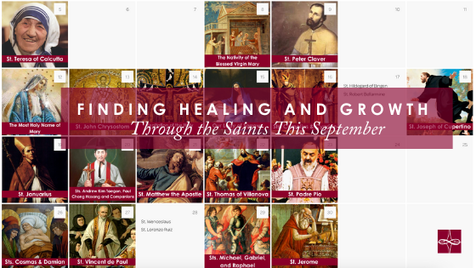

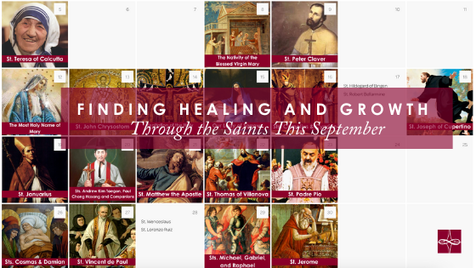

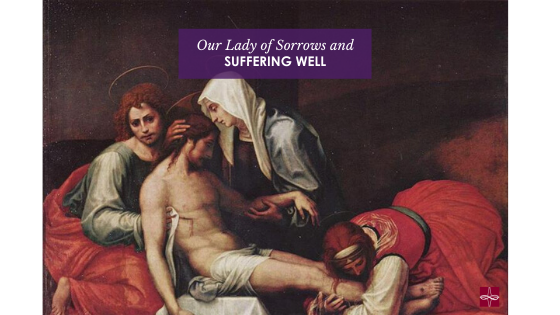



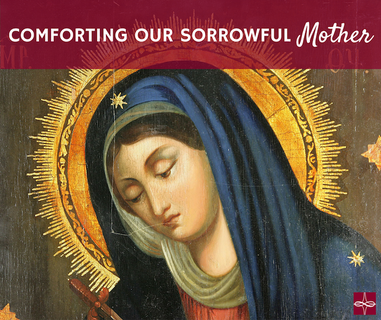
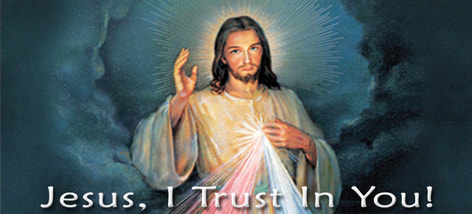
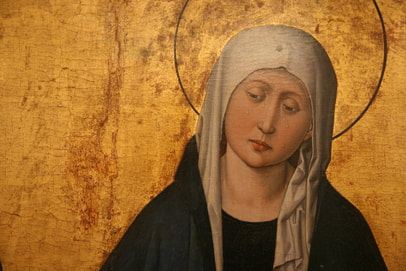
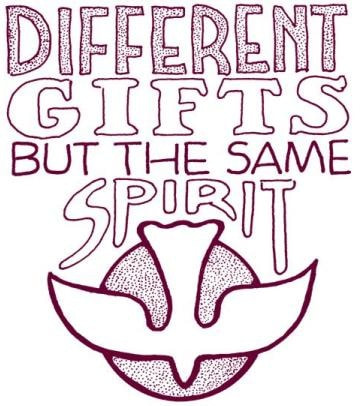
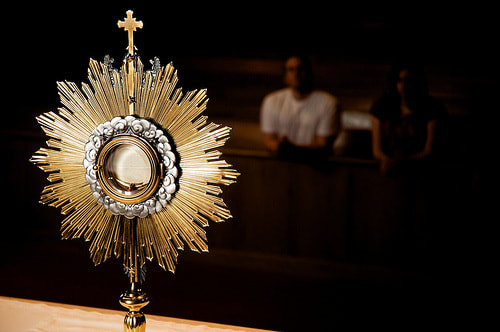



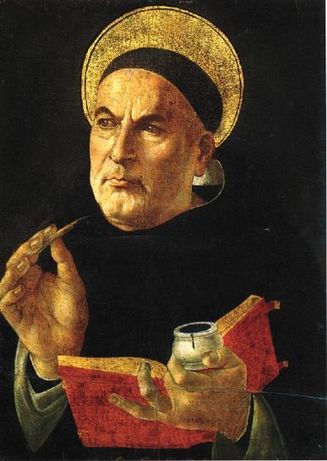


 RSS Feed
RSS Feed